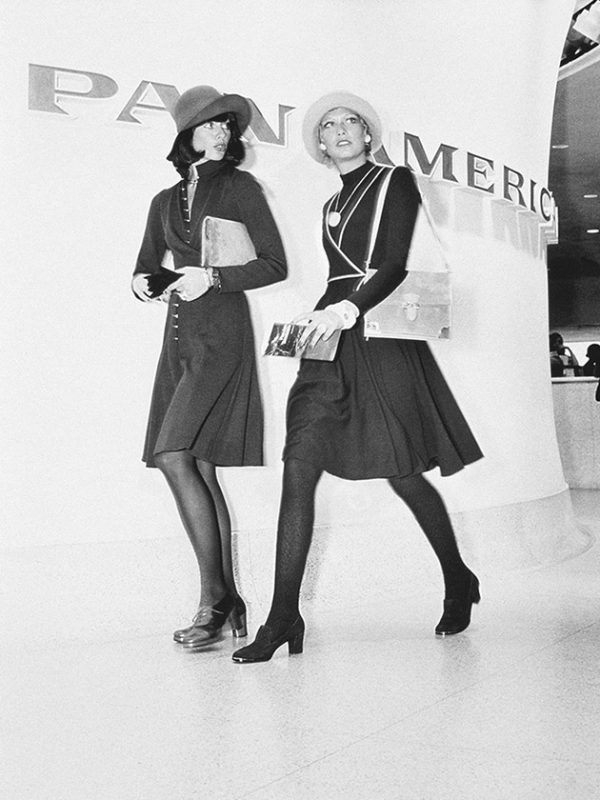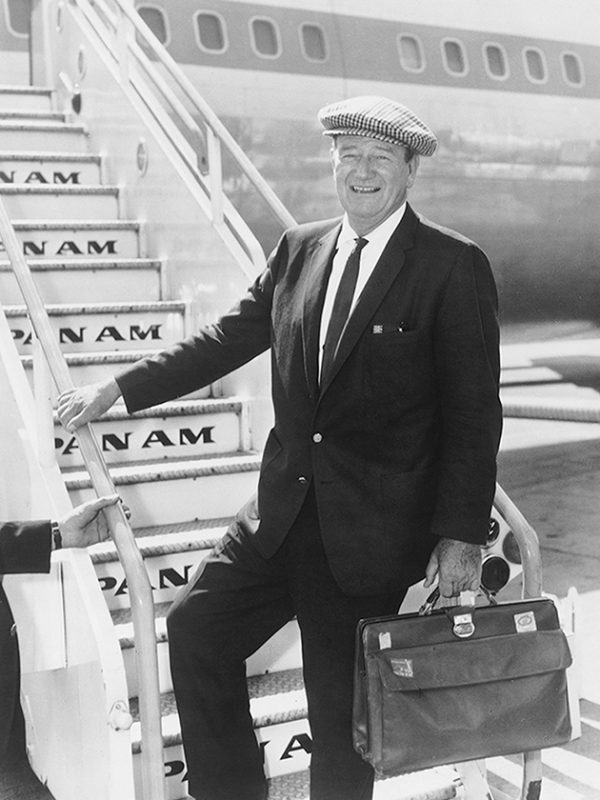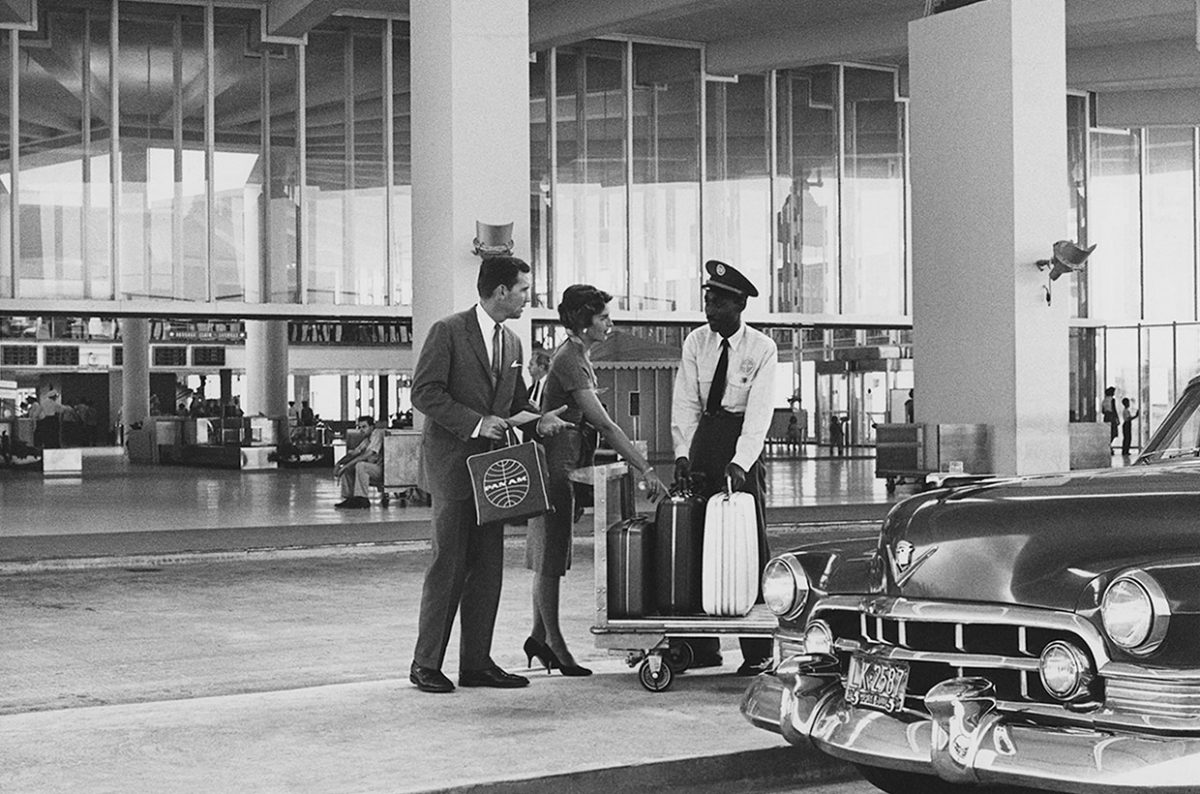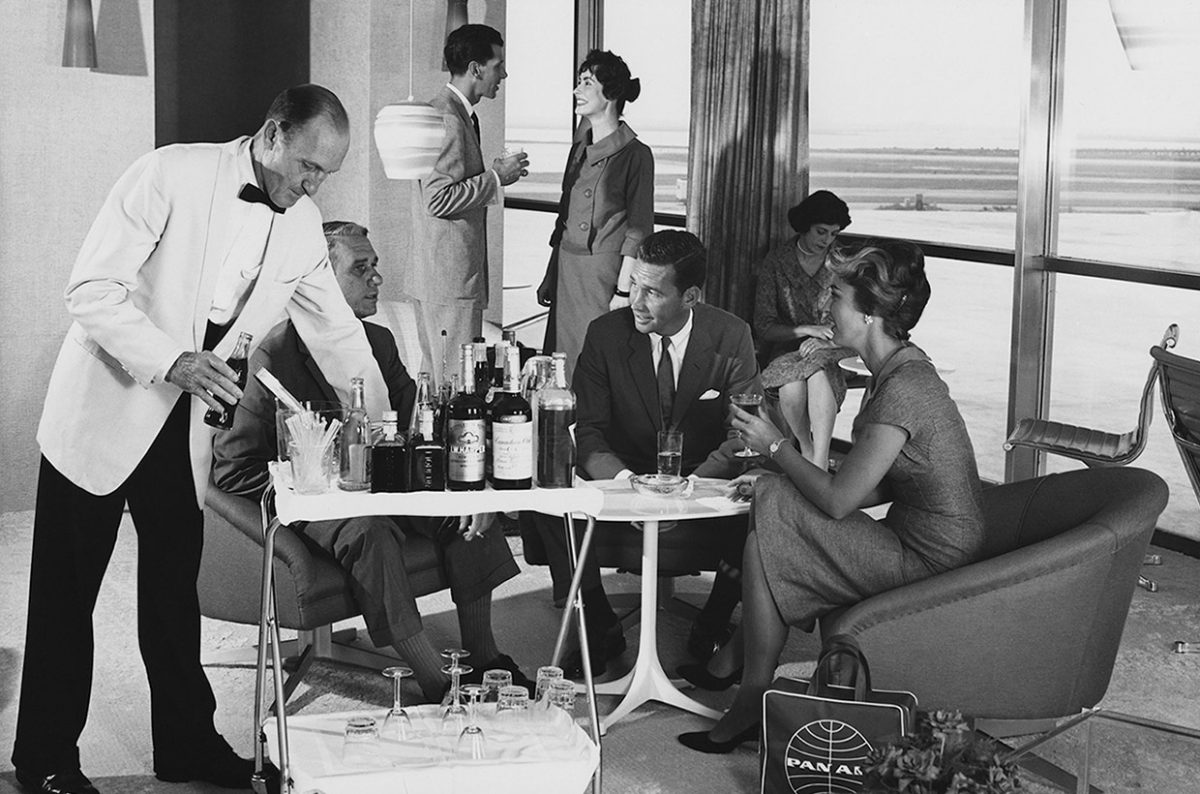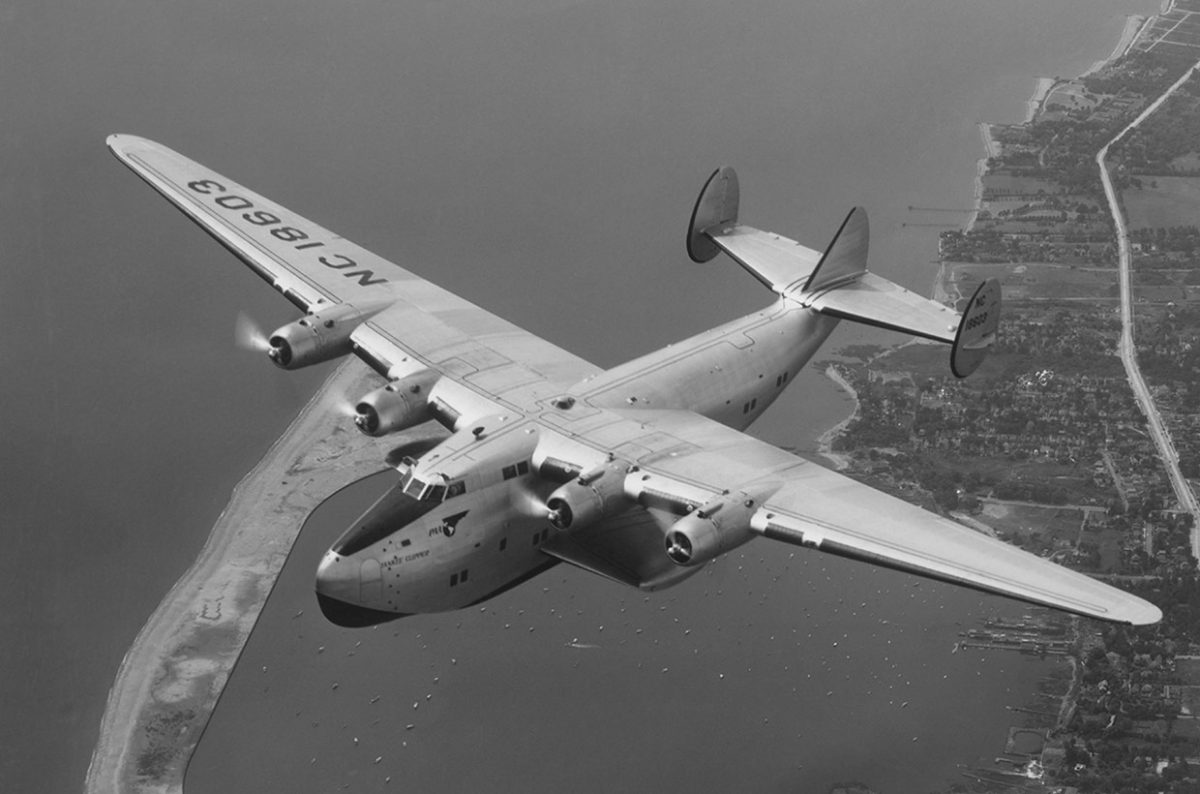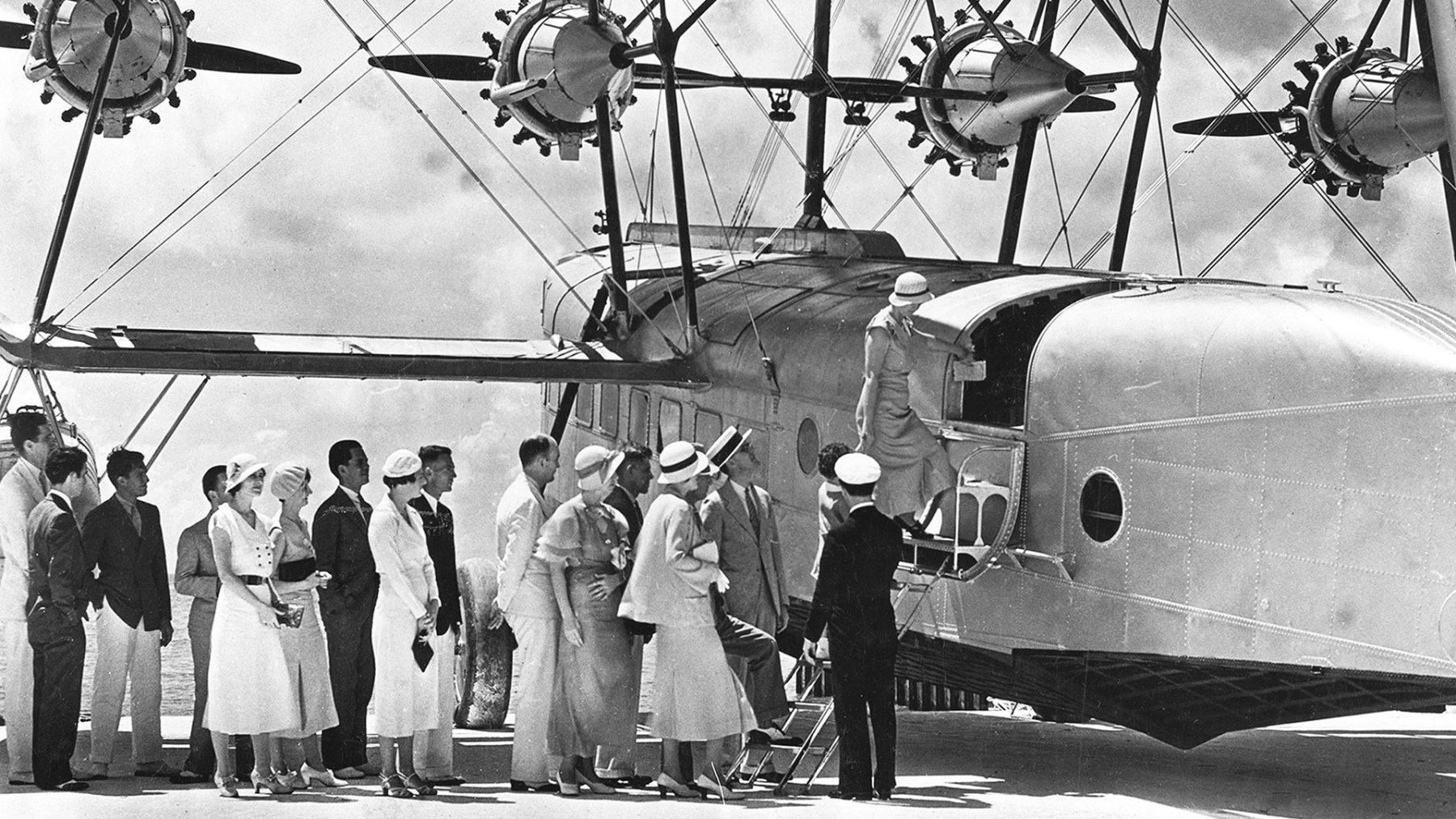PAN AM - When glamorous wanderlust had a name by Steffi Kammerer | 25th November, 2016 | Personalities
There was a time when flying was an adventure you dressed up for. When air travel was sexy and glamorous. And the airline of choice was: PAN AM. This year the legendary American carrier would have celebrated its 90th birthday. Berlin-based Callisto Publishers commemorates this anniversary with a magnificent, large-format illustrated book.
With its 424 lavishly designed pages, the illustrated book Pan Am – History, Design & Identity is a small work of art. You authored and published it yourself, despite being rather busy as a property developer. What do you find so fascinating about this particular airline? Matthias Hühne: So much has already been written about Pan Am. I myself have read shelves full of books, most of which were rather technical, though. A subject that had never been properly explored before was how Pan Am’s enduring image was created. I wanted to explain why the brand became so venerated and still enjoys great global name recognition.
A few years ago, there even was a U.S. TV show about the airline. All over the world, young people walk around with Pan Am bags, and the Pan Am lounge in former West Berlin is a cult hangout. The situation in Germany is quite special, actually. In part, the airline was representative of the protection the U.S. afforded West Berlin. It was a symbol of freedom and of the U.S. in general. Around the world – and this, I find really exciting – people associate positive qualities with Pan Am. Politically, America is frequently viewed negatively, and big corporations like McDonald’s or Coca Cola are often regarded with a portion of mistrust. This is totally different in Pan Am’s case: the focus is on the airline’s pioneering spirit and the thirst for adventure it inspired in people. In retrospect, one could criticize the way the company expanded its route network. The exploitation of foreign markets was not infrequently viewed as cultural imperialism. But if Pan Am hadn’t done it, another company would have. Personally, I think it’s great.
You flew Pan Am yourself when you were a child. Back then it was still something very special. Yes, I went to New York with my parents back in 1974. It was my first long-haul flight. I’ll never forget the experience of boarding the gigantic plane – as it seemed to me back then, as a child – with the smiling American flight attendants greeting passengers at the door. I still remember that the plane was not very full, which I loved at the time. Today, of course, I know that this was not good for Pan Am.
So you enjoyed the full attention of the Pan Am flight attendants, who were a class apart: multilingual, with a college degree and often from the best families. They didn’t just hand out stale bread rolls, but served four-course meals wearing white gloves. The flight attendants were part of the overall concept, which made Pan Am an “ambassador” for the U.S., and in turn for American culture. As a passenger, you really felt that.
The last Pan Am aircraft took off in 1991. How has the legend survived this long? It was the sum total of many factors that led to this unparalleled brand recognition, including the expert publicity starting with Charles Lindbergh.
He was hired by Juan Trippe, the founder of Pan Am, as a consultant. That was an extremely clever move. Without Lindbergh the whole story might have turned out very differently. Lindbergh became a legend after his nonstop flight from New York to Paris in 1927. After he joined the company, Pan Am was talked about all over the world. 1935 saw Pan Am’s first flight across the Pacific, which was turned into a movie by Warner Brothers soon afterwards. The company also managed to enter the jet age successfully. Trippe was so forward-thinking that he recognized the need for an entirely new corporate design. At first the company’s famous signet with the blue globe was not viewed favorably inside the organization. Nevertheless, the logo managed to establish itself, which is another credit to Pan Am.
Your book clearly shows that a lot of importance was given to the imagery right from the start – the aesthetic was enticing. The company was never just about travel. Pan Am, or so it seemed, was a way of life. On one of the old posters it says “Live life!” Go on, fly away, see the world!
In the 1950s, the company commissioned Norman Rockwell, one of the best-known American illustrators and especially popular with the middle-classes, to produce a series of drawings showcasing Pan Am’s worldwide destinations. This and other advertisements were all-pervasive and international air travel became part of the American dream, even though only few could afford it.
In the 1960s things really started taking off for Pan Am. Economically speaking, it was the airline’s most successful period in which it experienced enormous growth rates. In 1966, Trippe codesigned the new 747 with Boeing and immediately ordered 25 jumbo jets for the then incredible sum of $600 million. As an entrepreneur, he managed to predict developments with great accuracy again and again. He was always one step ahead, and possibly a little obsessed, in the best possible sense. Unfortunately, the introduction of the Boeing 747 also heralded the decline of Pan Am, even though the aircraft itself was a big success.
What went wrong? The decline was the result of many factors, on which Trippe largely had no influence. Pan Am did not receive regulatory approval to build up a domestic route network largely because of antitrust concerns. In retrospect, had Trippe set a different course in the early years, things wouldn’t have come back to haunt him.
Pan Am was a big presence in Manhattan for many years. In 1963 the company moved into its 59-floor building on Park Avenue, right next to Grand Central Station. The Pan Am logo was visible from almost anywhere in the city. At the top of the building there was a helipad from which passengers could quickly be taken to the Pan Am terminal at JFK airport.
And a lot of stars back then helped to build up Pan Am’s image. In the 1960s people loved being photographed next to jet airplanes and especially next to a Pan Am aircraft. Because the company only flew to international destinations at the time, it was immediately obvious that the person in the photograph was off to a faraway place, maybe even somewhere “exotic.” On top of that, celebrities – from Alfred Hitchcock to the Beatles – generated free publicity. The airline also positioned itself with the aid of product placement. A lot of the older James Bond movies feature Pan Am planes. As does Stanley Kubrick’s classic 2001, of course.
The end came in 1988 with the Lockerbie disaster, the bomb attack on a Pan Am jet in which 270 people lost their lives. Bookings collapsed. Three years later the company went under and became part of aviation history. I would argue that if the company had managed to muddle through somehow, not much of its glamorous image would have survived. Already in the 1980s, it stopped being special to fly Pan Am. The company’s collapse was its last big publicity event.
